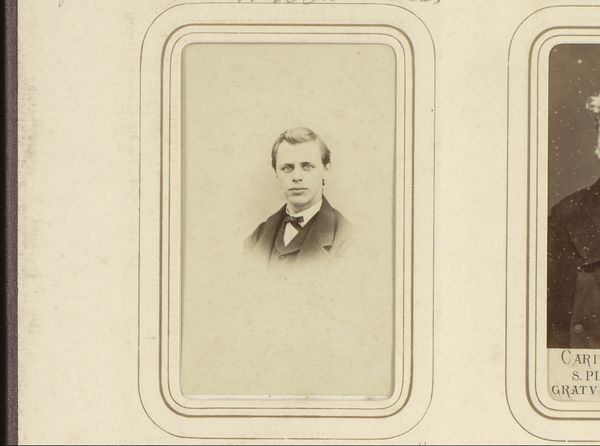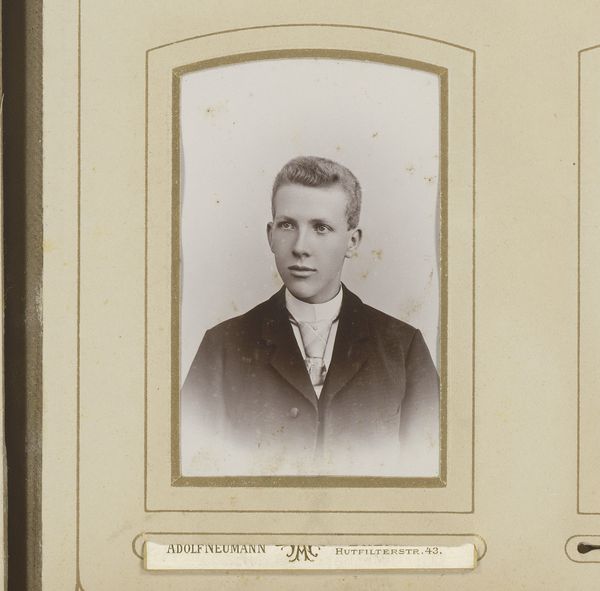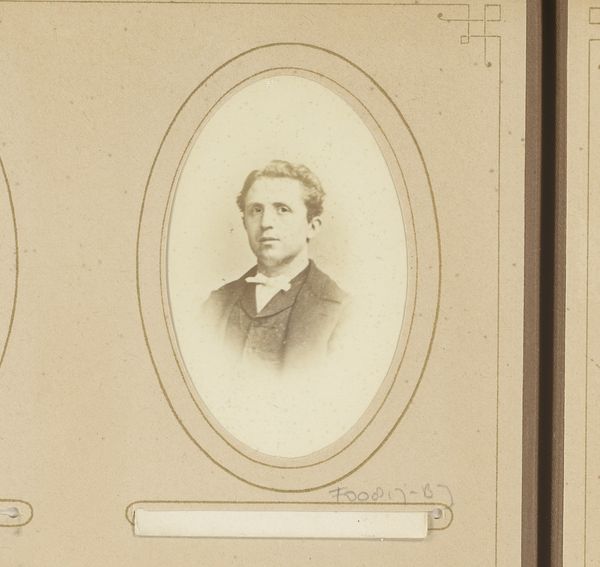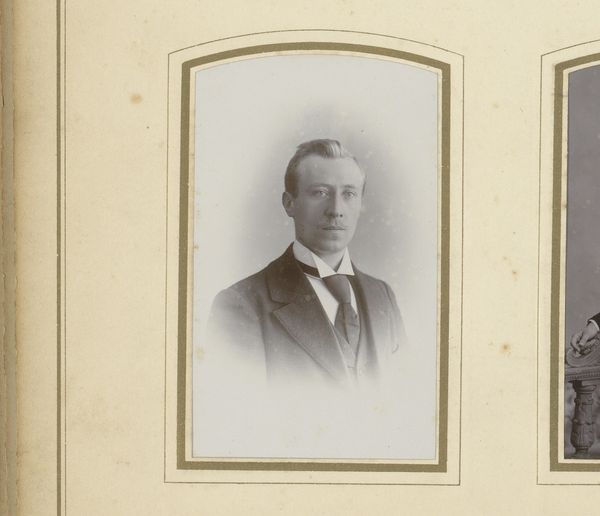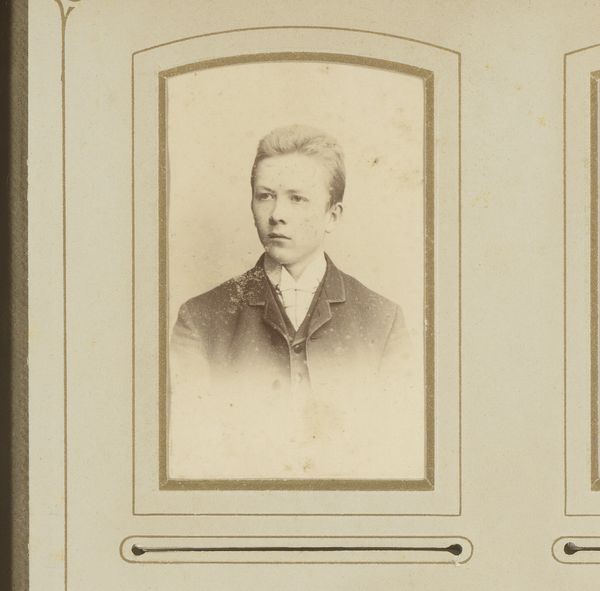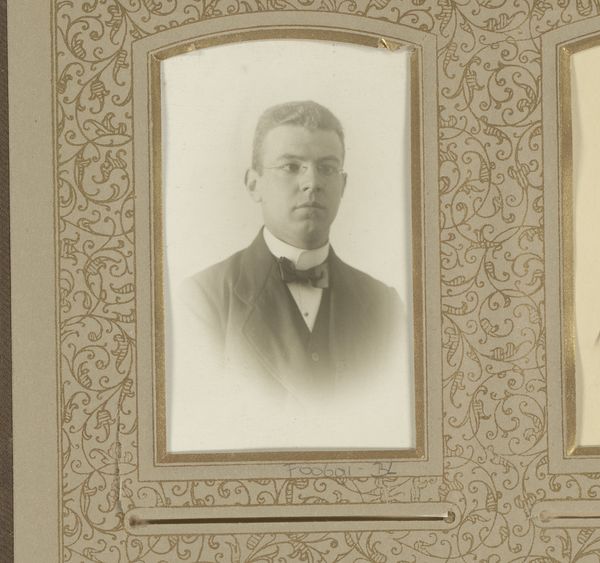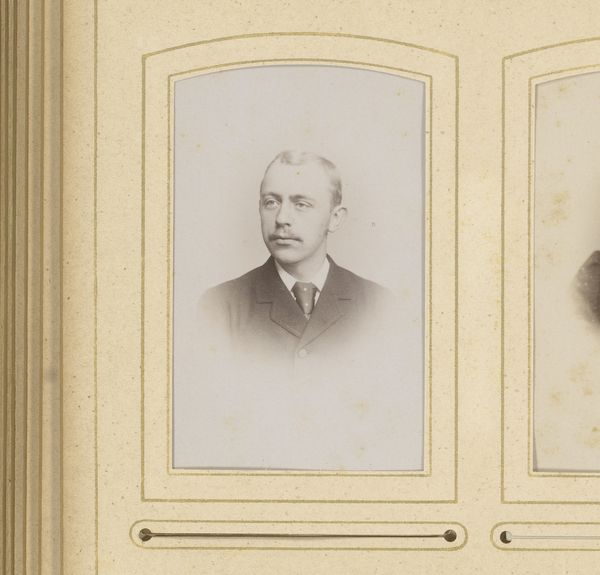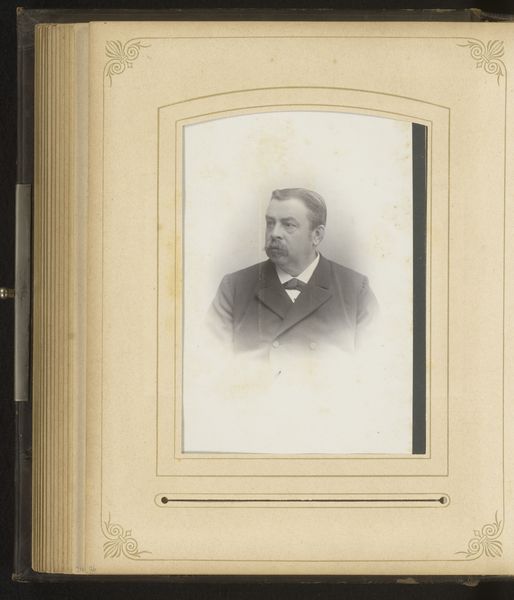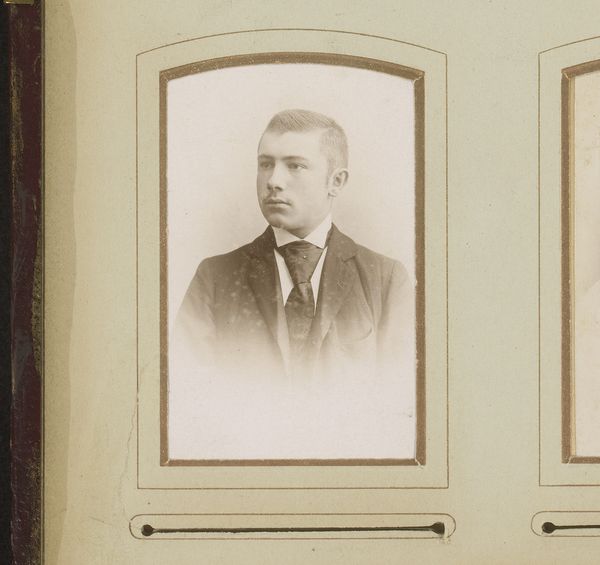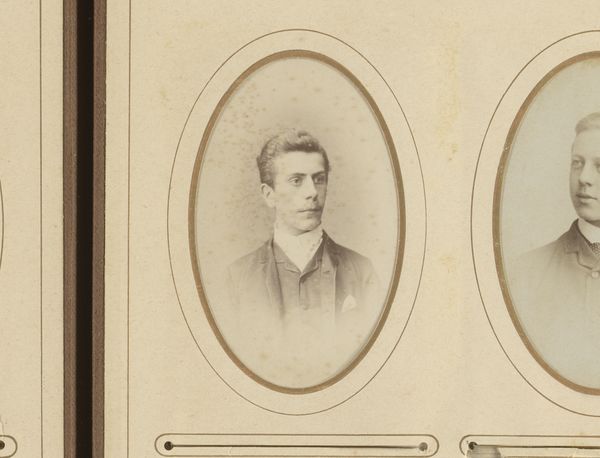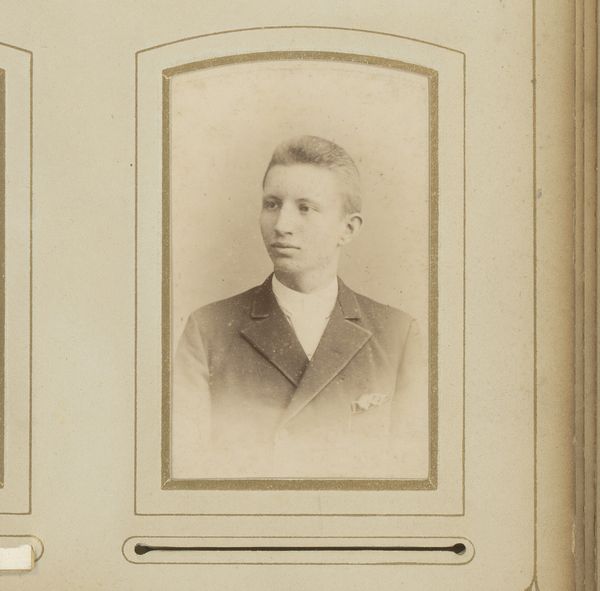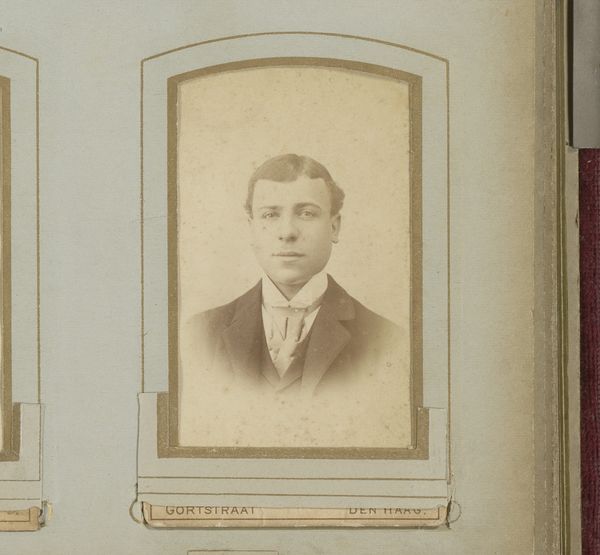
photography
#
beige
#
portrait
#
neutral colours
#
aged paper
#
toned paper
#
earth tone
#
muted colour palette
#
photo element
#
pictorialism
#
light earthy tone
#
figuration
#
photography
#
brown and beige
#
light and airy
#
academic-art
Dimensions: height 84 mm, width 53 mm
Copyright: Rijks Museum: Open Domain
Machiel Hendricus Laddé created this portrait of a man in the Netherlands, likely in the late 19th or early 20th century. The photographic portrait became increasingly common during this period, coinciding with the rise of the middle class and growing social mobility. Photography provided a means for individuals to document their existence and project a specific image of themselves to the world. The subject's formal attire suggests a desire to present himself as respectable and upwardly mobile. Laddé, as the photographer, played a role in shaping this image, using visual codes and conventions to convey social status and identity. By examining studio records, census data, and other historical sources, we can gain a deeper understanding of the sitter and the social context in which this portrait was made. The meaning and value of art are always contingent on the society and the institutional structures that surround its creation.
Comments
No comments
Be the first to comment and join the conversation on the ultimate creative platform.
